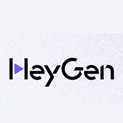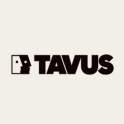Agentic AI Comparison:
HeyGen vs Tavus AI
Introduction
This report provides a comprehensive comparison between Tavus AI (https://www.tavus.io/) and HeyGen (https://heygen.com/?sid=rewardful&via=mb-skydis), two leading AI-powered video generation platforms. The evaluation covers key metrics relevant to enterprise and individual users: autonomy, ease of use, flexibility, cost, and popularity in 2025.
Overview
HeyGen
HeyGen focuses on rapid production of pre-recorded video avatars, mainly for marketing and content automation. It offers robust customization, scalable API integrations, and a broad selection of avatars and languages, positioning itself as a convenient tool for marketing and communication professionals.
Tavus AI
Tavus AI specializes in highly personalized, AI-driven video generation, with advanced conversational video interfaces simulating human-like interactions. Its solutions are used across industries for scalability and high realism, powered by text-to-video technology and sophisticated APIs for seamless integration.
Metrics Comparison
autonomy
HeyGen: 6
HeyGen primarily relies on pre-recorded, template-based avatars, limiting interaction to scripted responses; it is less autonomous than Tavus in real-time conversational uses.
Tavus AI: 8
Tavus AI supports advanced real-time interactions, sentiment analysis, and intent recognition, enabling high autonomy in conversational videos, including virtual assistants and tutors.
Tavus AI leads in autonomy due to its capabilities for real-time, interactive video experiences, whereas HeyGen is mainly designed for scripted, automated video content.
ease of use
HeyGen: 9
HeyGen is widely praised for its intuitive interface and simplicity, making video creation straightforward even for users with little technical or video editing experience.
Tavus AI: 7
Tavus offers code-free development, training docs, webinars, and live support, but its advanced customization and scalability introduce more complexity for non-technical users.
HeyGen outperforms Tavus AI on ease of use, particularly for non-technical users needing fast, templated video outputs.
flexibility
HeyGen: 7
HeyGen offers strong API automation and branding customization, but is less flexible in real-time or highly interactive applications compared to Tavus.
Tavus AI: 8
Tavus supports deep integration, multi-industry applications (healthcare, recruitment, customer support), and robust white-labeling, but faces some scalability limits and higher operational complexity.
Tavus AI is more flexible for deploying rich, interactive video solutions across varied industries; HeyGen focuses on streamlined automation for marketing-centered outputs.
cost
HeyGen: 6
HeyGen's cost is also reported as high, with hidden fees; however, it is perceived as slightly more affordable than Tavus for marketing-scale content generation.
Tavus AI: 5
Tavus is considered very expensive and lacks transparent pricing; high-quality personalization and real-time interaction significantly increase the price point.
Both platforms are costly, but industry consensus indicates HeyGen is somewhat more affordable; cost transparency remains a challenge for both.
popularity
HeyGen: 9
HeyGen is frequently ranked as one of the leading avatar-based video platforms for automated content, with strong market visibility and broader adoption for marketing and quick-turn video tasks.
Tavus AI: 7
Tavus is growing in popularity, especially in sectors needing advanced personalization (e.g., recruitment, virtual assistants), but has less overall market exposure compared to HeyGen.
HeyGen is more widely recognized and used, particularly among marketers and automation-first teams; Tavus is preferred in specialized use cases requiring deep personalization.
Conclusions
Tavus AI excels in delivering highly autonomous and flexible AI video solutions for industries demanding conversational realism and deep personalization, though it comes with higher costs and a steeper learning curve. HeyGen is a top choice for users prioritizing ease of use, affordability, and rapid marketing content deployment, enjoying greater market popularity despite less real-time interaction capability. Selection should depend on the depth of personalization and interactivity required versus cost and simplicity.

